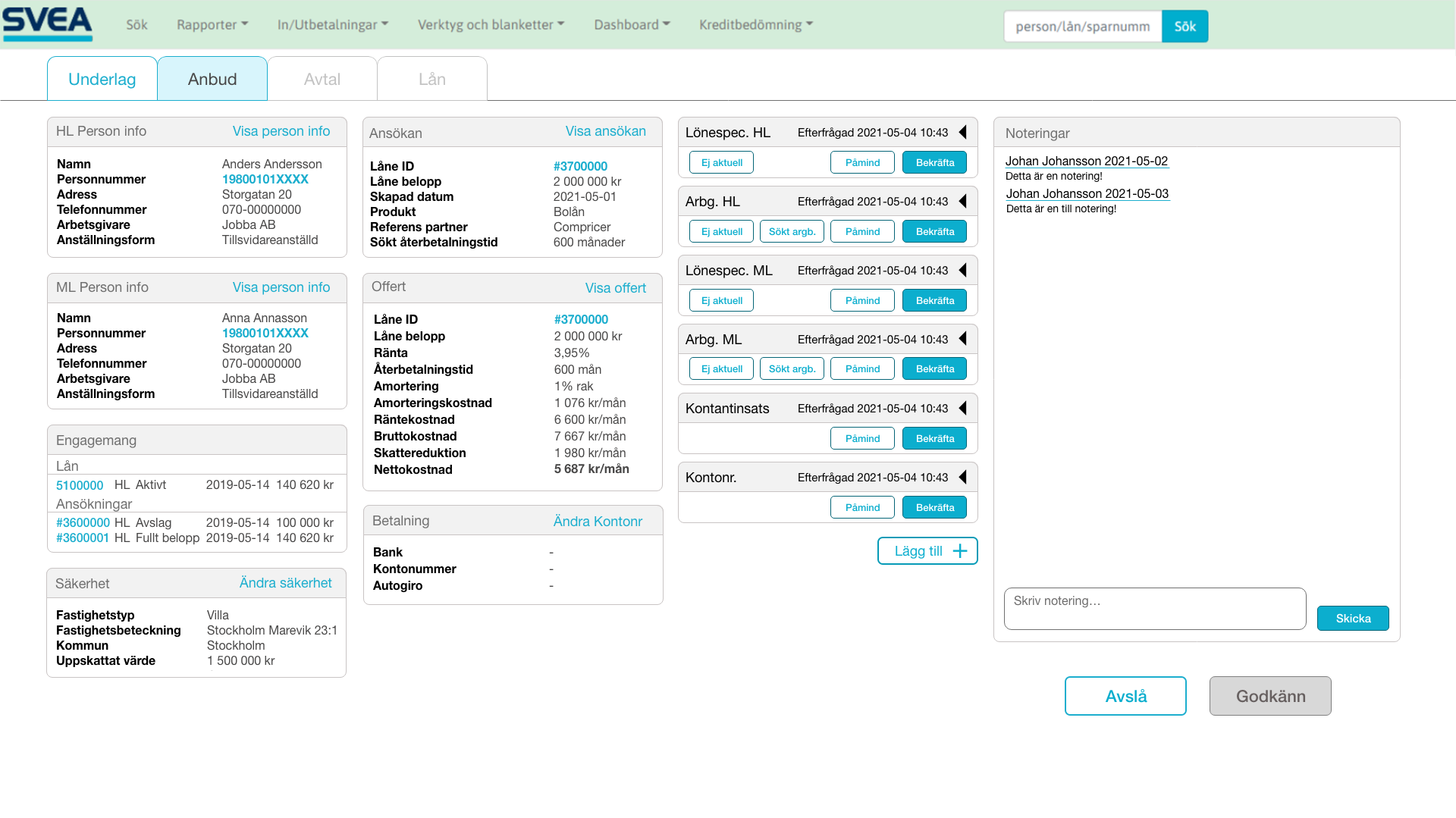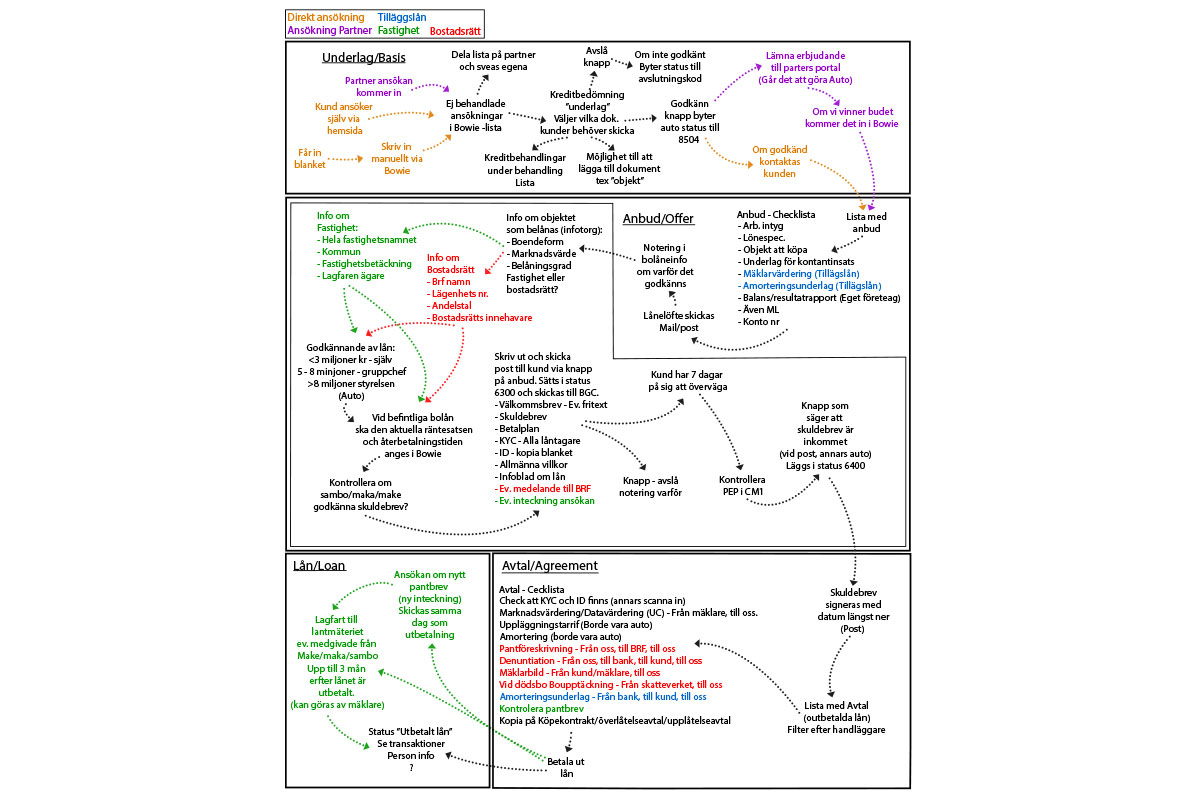Creating a long-term vision
During my time at Svea, I assisted them in designing and enhancing their in-house platform. Which is used by a diverse range of users, including customer support and loan officers. Focusing specifically on improving the experience for loan officers handling private loans and mortgages, my objective was to optimize the system's effectiveness, reliability, and overall cohesiveness. Over the years, numerous new rules and features had been integrated into the system, resulting in its current state as a large and complex database. While users could access all the necessary information, the design lacked the necessary support for a more seamless task completion.
One of the most fortunate aspects of this project was the close collaboration I had with both developers and users, facilitating rapid and efficient iterations. This close-knit dynamic allowed me to engage with users, identify issues, propose solutions, test them, discuss with developers, and ultimately implement changes—all within the same day. This collaborative strength proved invaluable, even when tackling more significant design challenges. Swift feedback from users and utilizing developers as sounding boards for problem-solving greatly contributed to our success.

The complexity of the system posed challenges when implementing substantial design updates. Sometimes it felt like to working with a tangled ball of yarn for the developers: any modification made in one area would impact at least ten other iconnected components. Similarly, for users accustomed to a specific system behavior, waking up to a drastically different interface could be disorienting. To avoid these challenges, we embraced a strategy of incremental changes, making the process smoother for both developers and users. However, to ensure the effectiveness of this approach, a clear long-term vision, shared by both UX designers and developers, played a crucial role. Every minor system modification was aligned with our long-term goal, fostering a sense of direction and purpose within the team.
To gather data and gain deeper insights into user interactions with the system, I employed a combination of ethnographic studies, user interviews, and analysis of task descriptions. Based on the findings, I crafted prototypes of varying fidelities. These prototypes were then presented to users, product owners, and developers, collecting feedback and generating additional data. This iterative process propelled the system closer to its desired state. Minor issues identified during this phase were promptly communicated to the developers for immediate resolution, while solutions for more significant design changes were earmarked for future planning, aligning with our long-term vision.

Take a look at the prototype
Another significant aspect of this project involved mapping the work tasks of loan officers and investigating the entire journey from loan requests til a loan is paid back to Svea. Surprisingly, no one really possessed a comprehensive understanding of the entire process or a clear vision of how it should be structured. The prevailing sentiment often seemed to be rooted in the phrase, "We've always done it this way," without knowing the underlying rationale. To dive deeper into this matter, I gathered more data and created journey maps to visualize this complex process. With these maps, I engaged in discussions with users, product owners, and developers, seeking their input on the accuracy and effectiveness of each segment.
Overall, my involvement in this project allowed me to contribute to the continuous enhancement of Svea's in-house platform. Through close collaboration, design iterations, and comprehensive mapping of work tasks, we propelled the system towards improved usability and long-term goals.
